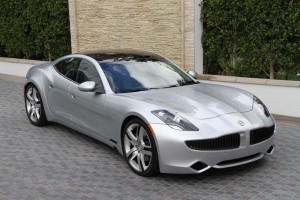Now defunct Fisker Automotive’s remaining assets, including a former General Motors plant in Delaware, will be available to the highest bidder after a ruling by U.S. Bankruptcy Judge Kevin Gross yesterday.
Two companies – Hybrid Technologies LLC and Wanxiang America – are expected to be the two leading bidders for the former EV maker. Gross scheduled a hearing for Monday, Jan. 13 at 2 p.m. to determine how the auction will be structured.
The ruling is a win for Wanxiang, which convinced the court to not only allow an auction, but also saw Gross place a limit on what Hybrid could claim in its offer.
Gross refused to accept Hybrid’s plan to use $75 million it said it is owed as Fisker’s senior secured lender as a credit bid for Fisker’s assets. It became the senior secured lender when it paid the U.S. Department of Energy (DOE) $25 million to take over a $168 million loan the DOE extended to Fisker. Hybrid is owned by Hong Kong billionaire Richard Li.
The judge sided with Fisker’s official creditors committee that a competitive auction was the best way to maximize recoveries for Fisker creditors, Gross capped Hybrid’s credit bid at $25 million. Despite the setback, Hybrid officials said the company will participate in the auction.
Wanxiang’s initial bid was for $37.5 million in cash, including possibly using the Delaware plant in the future to build electric vehicles, something that the attorneys for Hybrid told the court on Friday it would not do.
They suggested the plant could be sold with the proceeds going to some of the other creditors. Wanxiang is a subsidiary of one of China’s largest automotive suppliers and bought Fisker’s former battery supplier, A123, for $256 million.
(Foes fighting over Fisker’s future form. For more, Click Here.)
Sunni Beville, a lawyer representing creditors, believes that an auction could be held in February. She added the creditors hoped to entice others to bid. Bob Lutz, a former General Motors executive, and GreenTech Autos had shown interest in Fisker’s assets prior to the bankruptcy, she said.
Until 2011, Fisker appeared to be one of the most promising of a new flock of contenders who hoped to challenge the established automotive order with an assortment of “green” machines.
(Click Here to see Fisker’s tumble into restructuring.)
The company’s first product, the Karma, garnered a lot of praise for its sexy design and just as much scorn for its many problems. The company also built a prototype for a second vehicle, the Atlantic, before running into financial and battery production problems.

